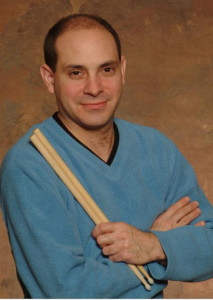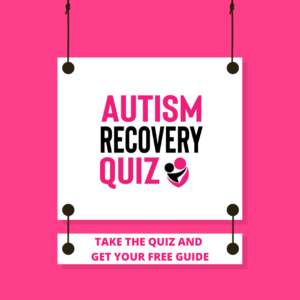Children Increased Grade Point Average and Learned Social Skills
I would like to share this article on Pat Gesualdo. I had the privilege of interviewing him for my podcast. Please listen to this informative discussion with Pat. 
In the study done in SURREY, ENGLAND/MONTVILLE, N.J. (August 27, 2014) –Drumming can help children with autism spectrum disorders and O.D.D. to stop violent behavior, self-mutilation, and assist with developing cognitive functioning, social skill interaction, and grade point average, according to the research team at the Woodland Grange School in Surrey England, and the non-profit research organization Drums and Disabilities, (D.A.D.) in Montville, NJ.
For people with autism and cognitive disabilities, the synapses in the brain ineffectively communicate with each other. Playing repeated patterns of music can re-train these synapses, and can help these people re-establish the correct synapse pathways. The study was conducted by David Ciauro (EdS, MA,LAC), Pat Gesualdo, Senior Research Director for D.A.D. Christopher Topple, and Colin Jenkinson, Head Teacher for the Woodland Grange School.
Playing repeated patterns of music rhythms which the researchers called “Drum Therapy,” helped the study participants to re-train the synapses in the brain, and develop physical and cognitive functioning.
“The study participants in our school have stopped violent behavior, self mutilation, and have achieved a 100% attendance record, as a result of the Drum Therapy research,” says Head Teacher Colin Jenkinson. “Their parents and I are in total disbelief of their success.”
“We are now helping psychologists, neuroscientists, special needs therapists, and teachers implement our drum therapy study techniques into schools, hospitals, and mental health facilities in several countries,” Gesualdo says. “As a result, many people with disabilities can live happier, healthier lives with the use of drumming.”
Several clinical research studies prove that drumming is beneficial in the treatment of disabilities. To test this theory, the investigators for this study tested 5 children ages 9 to 15, and 4 adults between the ages of 30 and 55. The participants had autism, o.d.d., dyslexia, and violence and behavioral issues.
The researchers measured the participant’s ability and behavior, and exposed them to specific methods of drumming (Drum Therapy). All the participant’s abilities were severely limited since birth. One adult Johnny, was extremely limited non-verbal, severely low functioning with no coordination, and needed assistance walking. One adult Larry had autism, one adult Joe had violence issues and was low functioning, one adult Andre had o.d.d., three children had a.d.d. and dyslexia, one child had violence issues and engaged in frequent self-mutilation, two of the children had violence issues and low school attendance records.
Six months into the study, the non-verbal adult Johnny could count to 10 verbally, and do cross opposite hand and foot patterns at the same time. The one child completely stopped self-mutilation, the three children with a.d.d. and dyslexia improved their retention and coordination, two children no longer had violence issues, and achieved 100% school attendance records.
The researchers also unlocked the key to coordination development for the special needs population. They found that the part of the brain responsible for processing thought (Cerebral Cortex) was being “distracted” by the part of the brain that processes sound (Primary Auditory Cortex). As a result, they found that silent practice or movement had very fast coordination and retention development in people with a.d.d. and dyslexia, as compared to loud drumming or activity.
Additionally, the research team found that specifically isolating parts of a musical score (Specific Isolated Instruction, or S.I.I.) re-enforced comprehension in the dyslexic children, by eliminating “gaps” in the thought process. S.I.I. helped these children to fully and clearly understand the rhythms, as opposed to just by explanation alone. The three children with dyslexia could not comprehend or perform the same rhythms during the course of the study until they used the S.I.I. method. The researchers also found that the S.I.I. also helped these children with spelling and math abilities.
“These Drum Therapy techniques were a beneficial treatment for the study participants,” Gesualdo says. “Therefore, the results are promising that Drum Therapy might be used as an appropriate, alternative therapy for other disabilities as well.”
The research team declares no financial compensation from D.A.D., or any other source.
www.dadprogram.org
www.icelandnj.com
www.facebook.com/patgesualdo
www.promark.com
www.zildjian.com
www.prologix.com
www.alfred.com
www.moderndrummer.com
Learn how to get the best results for
your child’s worst symptom of autism.
Take this quiz and find out how now.

Take the quiz so I can learn more about where you are on the autism recovery journey to understand how I can help you best. I’ll send you a guide to use now based on your quiz results, (plus further help from there so you learn the “how to” of all-natural autism recovery with an A-Z roadmap from a mom who has done it for her own son, even after she was told it could not be done.)
Take the quiz now at, NaturallyRecoveringAutism.com/Quiz
Follow Karen at www.facebook.com/naturallyrecoveringautism











